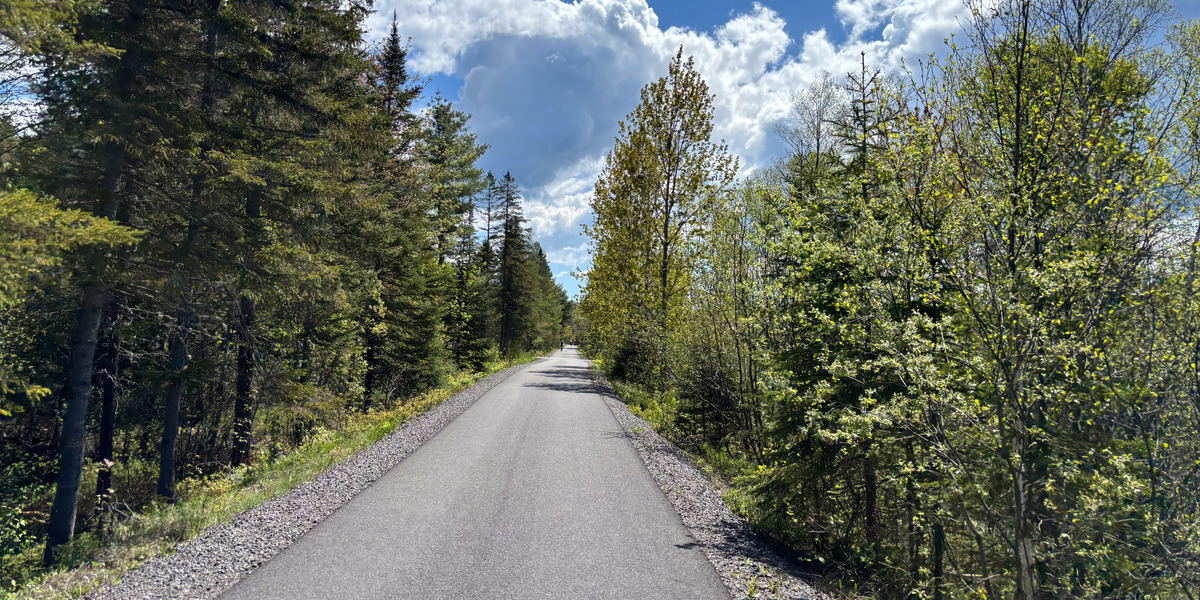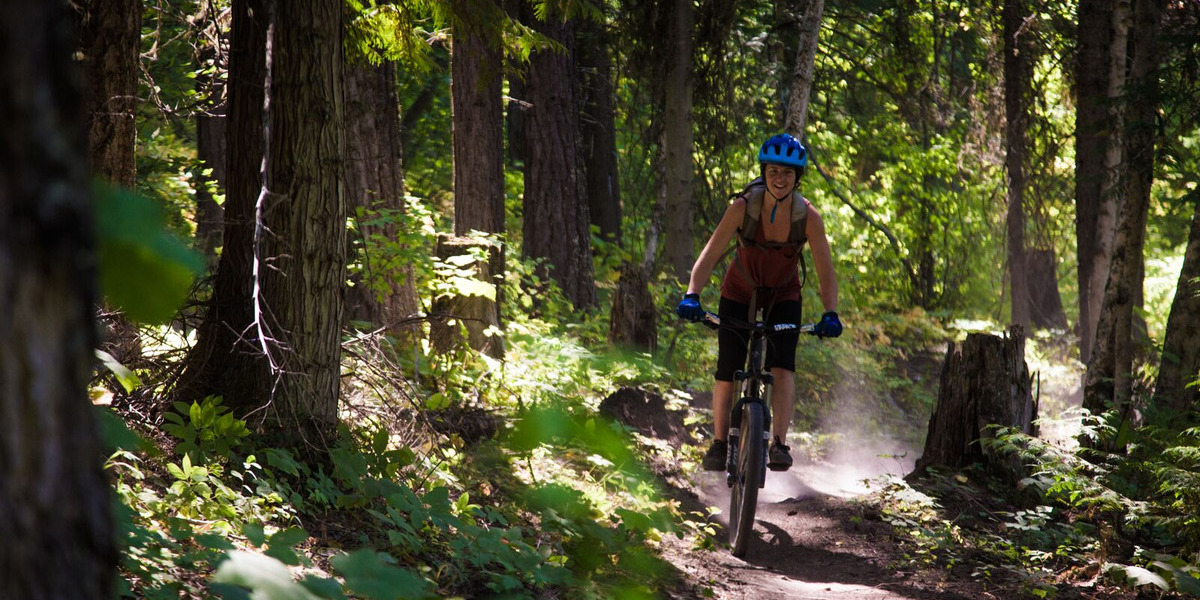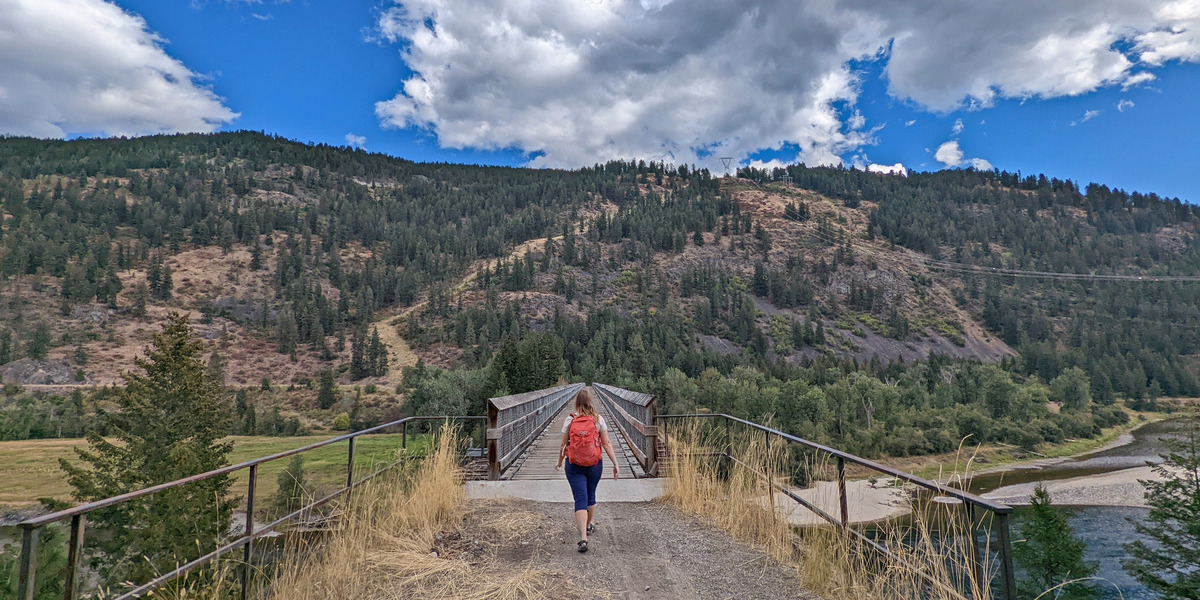Sara’s Trans Canada Trail: Remembering the Blueberry Express
Rail to Trail on the coast of Nova Scotia
Written by Sara Spike
Opened in 1916, Nova Scotia’s Musquodoboit Railway travelled east from the town of Dartmouth through rural Halifax County. Skirting the rugged coast of the Eastern Shore, the line terminated a hundred kilometers away in the agricultural hinterland of the Musquodoboit Valley. In addition to providing a necessary freight link for goods that were previously shipped by boat or along notoriously bad roads, a daily passenger service was also offered by the train. Like so many slow, meandering rural rail lines of the past, the Musquodoboit Railway was nicknamed the “Blueberry Express,” a term of endearment by which the train is still remembered locally today. The joke goes that a passenger could get off at the front of the moving train and would have ample time to pick berries before re-boarding at the caboose.
The blueberries are still plentiful, growing wild along the rail line with blackberries, huckleberries and cherries, but the train is long gone. The Blueberry Express was eventually sidelined by improvements in road transportation. Passenger service ended in 1960, and the line was discontinued in the early 1980s. The province acquired the land from Canadian National in 1991.
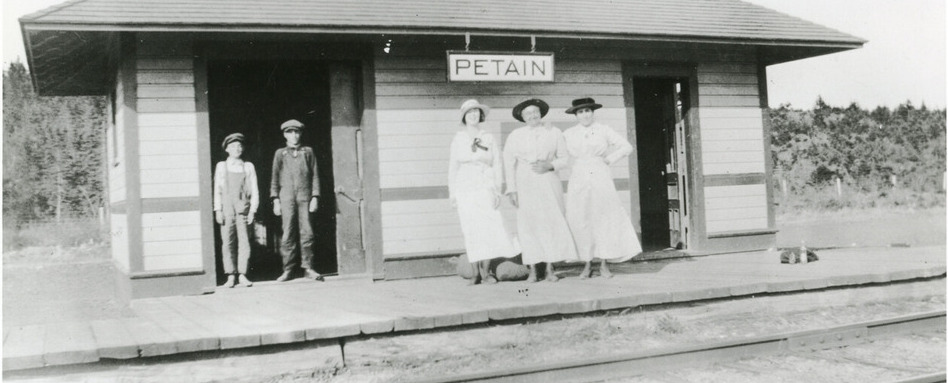
Photo credit: Eastern Shore Archives
A collaborative recreation corridor
Although many people still lament the short-sightedness that led to the discontinuation and stripping of local branch rail lines across the province, several communities along their routes have created something positive out of this loss. Since the 1990s, volunteer community groups across Nova Scotia, as elsewhere in Canada, have transformed the remaining railbeds into an extensive network of public multi-use trails. Today, the route of the Blueberry Express is a collaborative recreation corridor that passes through dramatic coastal landscapes and saltmarshes (on sections of the Trans Canada Trail including the Salt Marsh Trail and the Atlantic View Trail), lake-dotted forests (on the Blueberry Run Trail and Gaetz Brook Greenway), and a rolling river valley alongside granite cliffs (Musquodoboit Trail).
The early 20th-century history of the Blueberry Express continues to shape the experience of walking, cycling or skiing the trail today. The line provided an essential connection to market for various commodities, and its route was designed to take advantage of access points for these resources. With the exception of the historic canal connecting Porters Lake to the Atlantic Ocean, there are few visible traces of this industry left on the landscape, but the route itself is a reminder of the once-bustling trade of sawmills, agriculture and mineral extraction that characterized rural Halifax County a century ago.
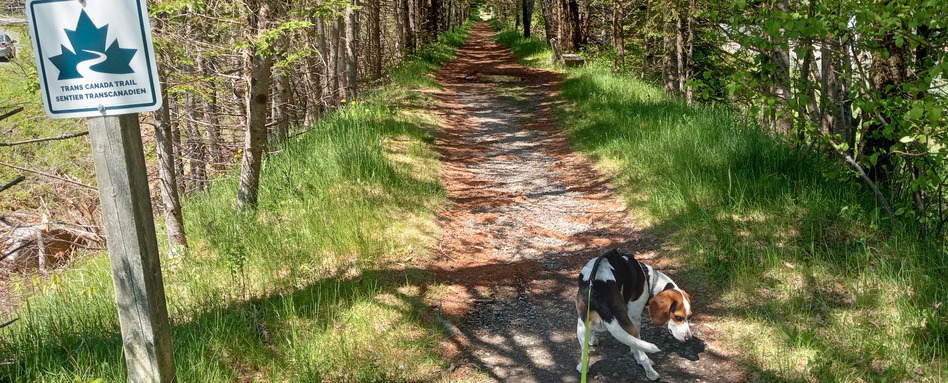
Photo credit: Sara Spike
A tunnel of light and shade
Porters Lake and the Musquodoboit River were sites of substantial timber operations. Each spring, as waters rose, the winter’s cut of hemlock, pine and spruce logs from the interior was driven down to lumber mills near the rail line at Three Fathom Harbour and Bayers Lake. Once the railway was established, sidings for loading lumber were built in communities all along its length. Travelling the existing trail through these areas today feels simply like being in the woods, the railbed tracing an uncannily straight line through the mixed forest of white spruce, fir and birch, typical of our coastal woodlands. In some places, the paths have narrowed as the forest reclaims them, so that the canopy of trees creates a tunnel of light and shade extending into the distance. Along other stretches, the paths are broad and flat, offering accessibility for all mobilities.
The route of the railway, passing Lawrencetown Beach, now a renowned surfing area and a provincial beach park, might seem to have been a nod to the summer tourist trade. Many passengers travelled to the famous MacDonald House hotel on the bluffs beside the beach, and the nearby marshland was a favourite of recreational duck hunters from the city. However, quite shocking to today’s ecological sensibilities, the route was in fact designed to enable the removal of beach sand and gravel from the shore at Terminal Beach and Seaforth, for use in concrete construction. Today, the trail offers beautiful views of the coast, and the magnificent tidal marshland remains a haven for migrating birds.
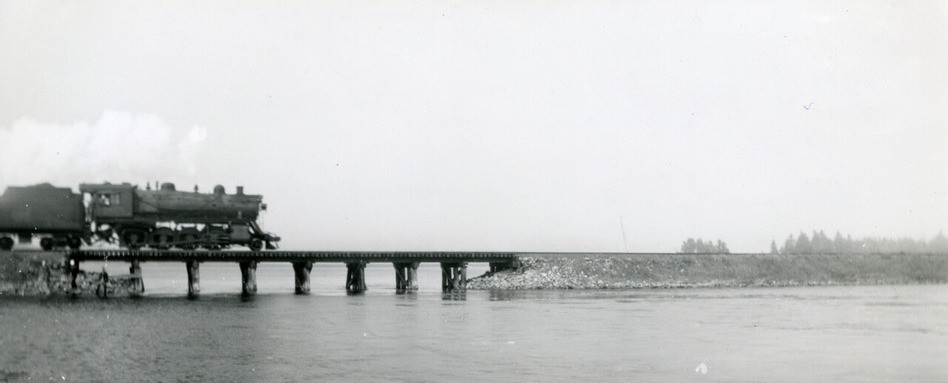
Photo credit: Eastern Shore Archives
Now a vibrant community hub
At Musquodoboit Harbour, the legacy of the Blueberry Express is celebrated at the local Railway Museum, where the original 1918 station has been preserved and now serves as a vibrant community hub. In summer months, it hosts a beer garden, food trucks and live music. Local brewery Sober Island Brewing makes a seasonal blueberry beer named in tribute to the long-departed rail line. On the outskirts of the village, the iconic truss bridge crossing the Musquodoboit River signals the start of the last leg of the rail trail along the river valley. Through the tireless work of volunteers, and with the support of Trans Canada Trail, the built heritage of the railway also remains visible elsewhere along the trail. Notable is the remarkable causeway with its four trestle bridges crossing Cole Harbour on the Salt Marsh Trail, and the three trestle bridges across Chezzetcook River, Gaetz Brook and Rogers Brook on the Gaetz Brook Greenway.
Once an extractive enterprise, the railway line now offers access to a different kind of natural resource. Travelers along these sections of the Trans Canada Trail will experience the unique landscapes and ecologies of coastal Nova Scotia, encounter wildlife and local flora, and perhaps pick a handful of berries along the way.

Photo credit: Sara Spike
—
Sara Spike is a cultural historian of rural communities and coastal environments in Atlantic Canada. She lives on the Eastern Shore of Nova Scotia, in unceded Mi’kma’ki. Follow her on Bluesky at https://bsky.app/profile/saraspike.bsky.social
Explore the area on our interactive map!
Main photo credit: Sara Spike





